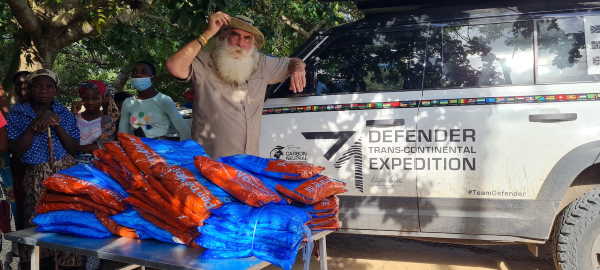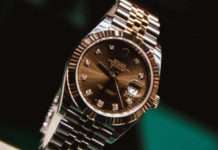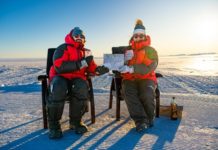Seven months after leaving Cape Agulhas, the Kingsley Holgate Defender Transcontinental Expedition has reached its geographic half-way point in Alexandria, Egypt, becoming the first exploration team in 30 years to cross the African continent from south to north through the disputed, hostile territories of Sudan.
Travelling in three New Defenders, this geographic and humanitarian expedition aims to cover 30 countries on its route from the southern tip of the African continent to the northern-most point of Europe at Nordkapp in Norway’s Arctic Circle, and then through Europe to reach Anglesey in Wales.
The core six-member team is made up of expedition leader Ross Holgate and his wife Anna, Kingsley Holgate and partner Sheelagh, Mike and Fiona Nixon, and assisted by African expedition members in each country who help with local knowledge and language. The team not only had to deal with mountains of paperwork related to overland travel in Africa, sharply rising fuel prices and the high costs and logistical challenges of Covid-19 restrictions and PCR tests at every border crossing, but also survived life-threatening situations and extreme hardships on the journey from South Africa to Egypt.

Four of the core team became extremely ill with malaria in East Africa as the route through Mozambique, Malawi, Tanzania, Kenya and Uganda coincided with heavy rains and flooding in areas where malaria is rampant. On reaching South Sudan, the expedition needed a military escort to the capital of Juba and government permission to traverse regions further north where armed attacks and inter-tribal uprisings are common, particularly in areas where thousands of South Sudanese have been displaced by extensive flooding and conflict and live in UN-supported IDP camps. One occasion saw Ross and Anna Holgate ambushed by hostile soldiers; another resulted in Mike Nixon, who is cycling large sections of the expedition route, manhandled off his bike by belligerent police personnel.
The disputed, UN-controlled, oil-rich region of Abyei between South Sudan and the Republic of Sudan threw another set of dangerous challenges at the expedition. With the border between the two countries closed, no foreign travellers have attempted this route in 30 years but it was the only option available for the expedition, as the civil war in Ethiopia’s Tigray region blocked the alternative route north into Sudan. Soon after setting out from a large UN military compound, the team drove straight into conflict as the Abyei region erupted in unrest between militia from the Christian south and Moslem north and inter-tribal clashes.
After running a gauntlet of illegal roadblocks, being chased by heavily armed guerrillas demanding a ransom in US dollars, and narrowly missing being caught in an attack on a village market that left over 40 people dead, the expedition was forced off the road by the Republic of Sudan military. The team spent three days under arrest at an army base near the disputed border area before being allowed to continue to Khartoum, where they were delayed for a further seven days awaiting permission from the military coup government to travel on to Egypt.
The expedition’s route through the Bayuda and Nubian Deserts of northern Sudan saw daytime temperatures exceed 50’C and the team rationing water and fuel to reach Wadi Halfa on the Egyptian border, before continuing onto Cairo, traversing the Western Desert, and ultimately reaching Alexandria on the Mediterranean coast.
‘This expedition is the first long-distance, real-life test for the new Land Rover Defender and in the dangerous situations we experienced, our lives certainly depended on the three vehicles,’ said Ross Holgate. ‘If the two P400s and diesel-powered D300 had not performed – if any of them had had a single glitch when we were driving hell-for-leather to get away from the militia and their guns – or if they weren’t able to tackle the difficult terrain that the expedition confronted – weeks of torrential rain, flooding rivers and thick mud, rocky mountain passes, hundreds of kilometres of untarred dirt roads churned into bonnet-level-deep trenches by convoys of UN aid trucks, not to mention continuous days of mind-numbing heat, dust and desert sands – we would never have made it to Alexandria, let alone be alive and looking forward to the second half of the expedition.’
Despite the challenges, the expedition remained true to its geographic objectives. In particular, following the White Nile on its 6,650Km journey from Lake Victoria to Murchison Falls and Lake Albert in Uganda, through South Sudan to the impenetrable Sudd, reaching the confluence of the White and Blue Niles at Omdurman in Sudan, tracking the river’s winding route through the Nubian Desert to explore the ancient pyramids, tombs and temples of the Kushite Kingdom of the Black Pharaohs, and crossing the Aswan Dam in Egypt before finally reaching the Nile Delta at Alexandria.
This expedition is the 40th for renowned explorer Kingsley Holgate and like all his previous expeditions, is also a humanitarian journey of purpose. ‘Sometimes, it was a case of risking lives to save and improve lives,’ said Kingsley, ‘but we stuck to our aim of providing humanitarian support to 300,000 people en route through Africa. Thanks to the support of Land Rover and other key partners, I’m glad to say we achieved it.’
Before crossing into Mozambique, the expedition reached the milestone of providing two million meals of nutritional support and early childhood development teaching materials to children at 130 rural creches, upgrading 20 of the most dilapidated, and completed projects to supply thousands of community residents with clean drinking water in water-scarce areas of northern KwaZulu-Natal.
In Mozambique, Malawi, Tanzania, Uganda and South Sudan, the expedition worked with long-term partners Goodbye Malaria and in-country hospitals, churches, schools and community clinics on malaria prevention, providing educational material and distributing tens of thousands of Vestergaard high-quality, insecticide-treated malaria nets to pregnant women and mothers with young children who are the most vulnerable.
Throughout the expedition’s seven-month journey from South Africa to Egypt, the team also provided eye-tests and distributed thousands of pairs of reading glasses to mostly elderly, poor-sighted people in remote communities as part of their Mashozi’s Rite to Sight programme. ‘The need for sight is so great in the outlying regions we travel through – we will never forget the joy and instant change a simple pair of spectacles makes to someone’s life,’ said Sheelagh Antrobus, Kingsley’s partner. ‘Whether it was with a church community in Malawi, or working under a mango tree helping senior members of the towering Dinka people and their big-horned cattle in South Sudan, or being allowed into the inner sanctum of a deeply religious, desert-dwelling Moslem community near the Siwa Oasis during Eid celebrations to assist the heavily-veiled women folk – every experience was unforgettable and humbling.’
‘The diversity of cultures and landscapes on this expedition through Africa has been truly astonishing,’ continued Kingsley. ‘From Easter celebrations and church bells to Ramadan calls to prayer and the feast of Eid, from torrential rains to drought, from the vibrancy of southern Africa to the wildlife-rich savannahs of East Africa and the harsh, ancient deserts of Sudan and Egypt – we’ve been truly privileged. Despite the difficulties of crossing the two Sudans, we’ve been met at every turn with kindness, generosity and friendship; the expedition’s Scroll of Peace and Goodwill is already half-full of wonderful messages of hope in every language.’
Ahead lies the shipping of the three now battle-hardened Defenders across the Mediterranean to Greece and the second leg of the expedition through Eastern Europe to Nordkapp in Norway’s Arctic Circle. However, Russia’s invasion of Ukraine has thrown a major challenge at the geographic objectives of the expedition’s European chapter.
‘The ongoing situation in Ukraine is not only deeply upsetting but has forced us to do a complete re-think,’ explained Ross. ‘Our planned route included both countries; we were so looking forward to exploring Ukraine, reaching the Black Sea, and tackling off-the-beaten-tracks to get to Moscow and St Petersburg. Obviously, that’s now out of the question but there are still plenty of fascinating Eastern European countries to experience.
‘The entire expedition team remains focussed on reaching Nordkapp and finishing this, the first ‘Hot Cape to Cold Cape’ journey in recent years. From there, we’ll traverse Scandinavia and Western Europe, cross the Channel into the UK and end on the Isle of Anglesey in Wales, where 75 years ago, the first Land Rover design was sketched in the sands of Red Wharf Bay by engineer Maurice Wilks in 1947. It will be a world-first expedition, especially for the new Land Rover Defender.’












